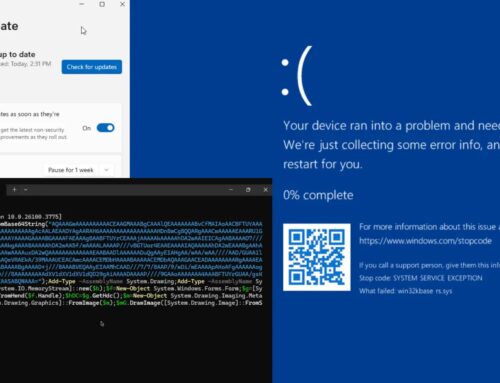
LockBit Operators Using Stealthy DLL Sideloading Technique to Load Malicious App as Legitimate One
The cybersecurity landscape is a perpetual arms race, and threat actors, particularly sophisticated ransomware groups like LockBit, are consistently refining their tactics to breach defenses. A recent and concerning development highlights LockBit operators leveraging a stealthy technique known as DLL sideloading to deploy their malicious payloads, effectively masquerading their ransomware as legitimate applications. This strategy exploits inherent trust mechanisms within operating systems, making detection significantly more challenging.
Understanding DLL Sideloading and Trust Exploitation
DLL sideloading is a cunning evasive maneuver that takes advantage of how Windows applications locate and load Dynamic Link Libraries (DLLs). When a legitimate, digitally signed application starts, it searches for necessary DLLs in a predetermined order of directories. If an attacker places a malicious DLL with the same name as a legitimate one in an earlier position within this search order – often in the application’s own directory – the application will inadvertently load the malicious DLL instead of the intended one. This effectively grants the malicious code the same trust and permissions as the legitimate application.
LockBit’s adoption of this technique is particularly insidious because it subverts established security controls. Organizations often rely on application whitelisting and digital signatures to verify the authenticity of executables. However, DLL sideloading bypasses these checks by piggybacking on an already trusted process. The malicious code then executes within the context of a seemingly harmless application, making it blend seamlessly into normal system activity.
The LockBit Operator’s Modus Operandi
According to recent analysis, LockBit operators are strategically choosing legitimate applications that are commonly found on enterprise networks and have predictable DLL dependencies. By crafting malicious DLLs that mimic these dependencies, they can effectively load their ransomware components. This method allows them to:
- Evade traditional signature-based detection systems that might flag the ransomware executable itself.
- Bypass application whitelisting, as the initial execution chain originates from a trusted binary.
- Maintain persistence and privilege escalation under the guise of legitimate software.
The end goal, as always with LockBit, is to encrypt critical data and demand a ransom, causing significant operational disruption and financial loss. The sophistication of this DLL sideloading technique underscores the evolving threat landscape and the need for more advanced defensive strategies.
Remediation Actions and Proactive Defenses
Combating sophisticated techniques like DLL sideloading requires a multi-layered security approach focusing on prevention, detection, and rapid response. While there isn’t a single CVE directly addressing the general concept of DLL sideloading, specific instances or misconfigurations could be related. For example, related vulnerabilities might be seen in how certain applications handle their search path. One could consider general software supply chain weaknesses such as CVE-2022-26925 impacting how search orders can be abused, though this is not a direct match to LockBit’s specific instance, it highlights the general threat category.
- Principle of Least Privilege: Limit user and application permissions to the absolute minimum necessary. This reduces the blast radius if an application is compromised.
- Advanced Endpoint Detection and Response (EDR): Deploy EDR solutions capable of behavioral analysis and suspicious process monitoring. These tools can detect anomalous behavior even if the initial execution appears legitimate.
- Application Control/Whitelisting: While DLL sideloading can bypass some whitelisting, combine it with strict policies on where DLLs can be loaded from. Consider enforcing strict path restrictions for DLLs.
- Regular Software Patching: Keep all operating systems and applications updated. While DLL sideloading is a conceptual attack, vulnerabilities in specific applications could make them more susceptible.
- Network Segmentation: Isolate critical systems to limit the lateral movement of ransomware once it gains a foothold.
- User Education and Awareness: Train employees to recognize social engineering tactics often used to deliver initial payloads that may enable DLL sideloading.
- Threat Hunting: Proactively search for indicators of compromise (IoCs) and anomalous activity within your network. Look for unknown DLLs loaded by legitimate processes from unusual locations.
Detection and Analysis Tools
Effective defense against DLL sideloading requires robust tools for monitoring and analysis:
| Tool Name | Purpose | Link |
|---|---|---|
| Sysmon | Comprehensive system activity logging, including process creation, network connections, and DLL loads. Crucial for detecting suspicious DLL activity. | Sysinternals Sysmon |
| Process Monitor | Real-time file system, Registry, and process/thread activity monitoring. Can help identify where applications are loading their DLLs from. | Sysinternals Process Monitor |
| IDA Pro / Ghidra | Reverse engineering tools for analyzing executable binaries and DLLs to understand their functionality and identify malicious code. | IDA Pro / Ghidra |
| VirusTotal | Online service that analyzes suspicious files and URLs using multiple antivirus engines and scanning tools. Can help identify known malicious DLLs. | VirusTotal |
| Elastic Security (SIEM/EDR) | Integrated SIEM and EDR platform for collecting, analyzing, and alerting on security data, including endpoint telemetry that could indicate DLL sideloading. | Elastic Security |
Conclusion
The LockBit ransomware group’s adoption of DLL sideloading marks a significant evolution in their attack methodology, moving from brute-force tactics to more refined, stealth-focused techniques. This strategy underscores the necessity for organizations to shift from easily bypassed signature-based defenses to a more proactive, behavioral-centric security posture. By understanding the mechanics of DLL sideloading and implementing robust EDR, application control, and continuous monitoring, businesses can significantly enhance their resilience against such sophisticated threats and protect their critical assets from the devastating impact of ransomware attacks.





